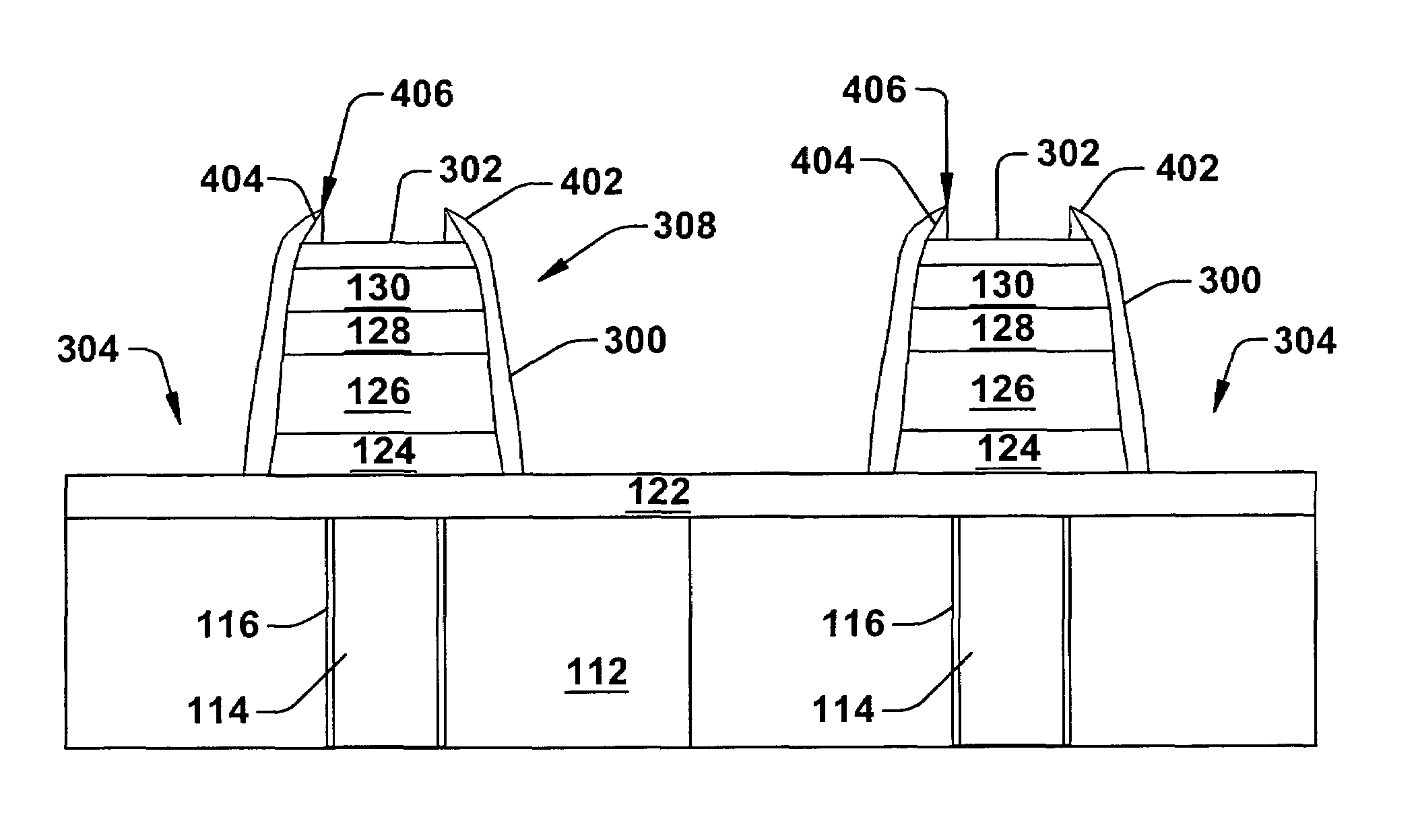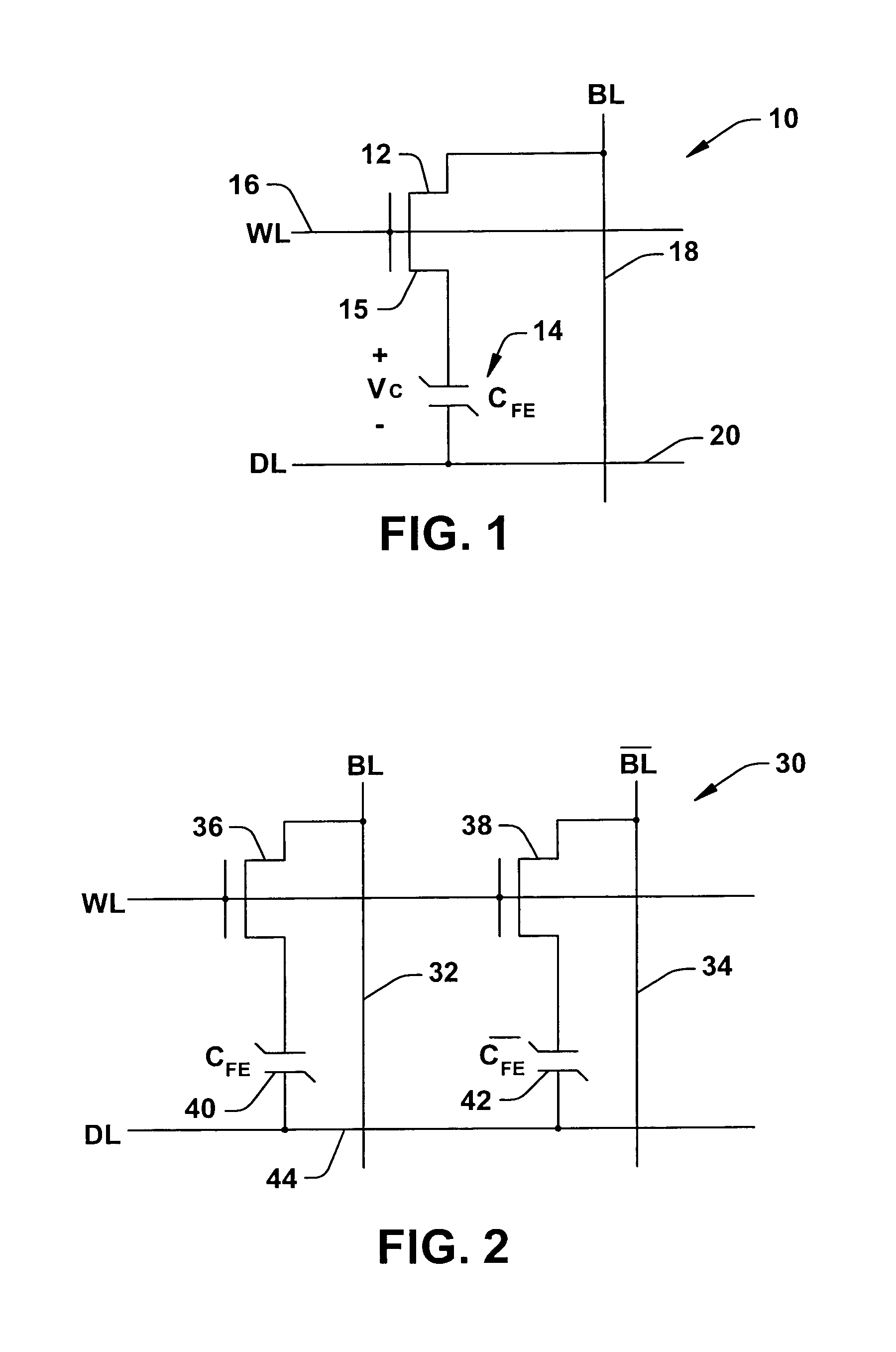FeRAM capacitor stack etch
a capacitor and stack etching technology, applied in the field of integrated circuit processing, can solve the problems of metallization not being compatible with a minimum feram cell size, cost disadvantages for embedded memory applications, transistors and other front-end devices, etc., to achieve the effect of minimizing cell size, less sensitive, and cost advantage per bi
- Summary
- Abstract
- Description
- Claims
- Application Information
AI Technical Summary
Benefits of technology
Problems solved by technology
Method used
Image
Examples
Embodiment Construction
[0037]The present invention will now be described with respect to the accompanying drawings in which like numbered elements represent like parts. While the following description of the instant invention revolves around the integration of the FeRAM devices with logic devices and other devices which can be found on a digital signal processor, microprocessor, smart card, microcomputer, microcontroller or system on a chip, the instant invention can be used to fabricate stand-alone FeRAM devices or FeRAM devices integrated into a semiconductor chip which has many other device types. In particular, the improved performance of the FeRAM device of the instant invention compared to standard semiconductor memories appears to make FeRAM the memory of choice for any handheld device which requires low power and large degree of device integration.
[0038]The figures provided herewith and the accompanying description of the figures are provided for illustrative purposes. One of ordinary skill in the...
PUM
 Login to View More
Login to View More Abstract
Description
Claims
Application Information
 Login to View More
Login to View More - R&D
- Intellectual Property
- Life Sciences
- Materials
- Tech Scout
- Unparalleled Data Quality
- Higher Quality Content
- 60% Fewer Hallucinations
Browse by: Latest US Patents, China's latest patents, Technical Efficacy Thesaurus, Application Domain, Technology Topic, Popular Technical Reports.
© 2025 PatSnap. All rights reserved.Legal|Privacy policy|Modern Slavery Act Transparency Statement|Sitemap|About US| Contact US: help@patsnap.com



